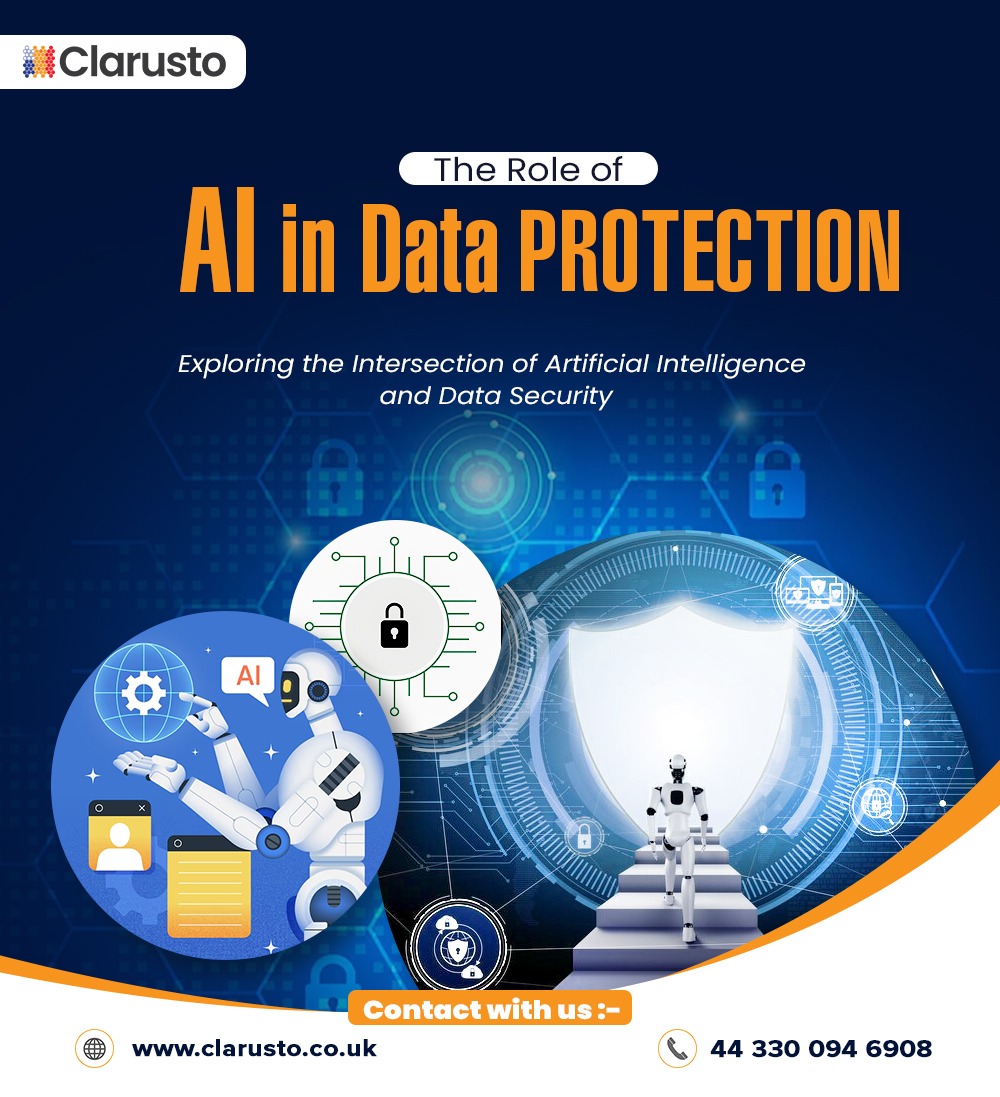Data protection has become a top priority for both consumers and enterprises. The conventional approaches to protecting sensitive data are becoming insufficient due to the exponential increase in data output and the growing sophistication of cyber-attacks. Let us examine how artificial intelligence (AI), transforms data protection procedures in a variety of businesses.
AI plays a far larger role in data protection than just automation. It is a crucial tool for bolstering digital defenses due to its real-time enormous data analysis capabilities, pattern recognition, and ability to anticipate possible security breaches. Let’s examine AI’s complex role in data protection and how it is changing cybersecurity tactics in more detail.

- Threat Detection and Mitigation
Conventional cybersecurity protections frequently depend on reactive, rule-based systems. They react to established threats, but they have trouble spotting new or developing cyberattacks. Machine learning algorithms are used by AI, on the other hand, and they are able to adapt and learn from patterns in data. AI systems can identify suspicious activity suggestive of a potential breach before it happens by continuously evaluating system abnormalities, user behavior, and network traffic. Organizations can efficiently minimize damage and mitigate risks by thwarting cyberattacks in their early phases using the proactive approach to threat detection.
- Behavioural Analysis
Insider attacks and human mistake provide serious obstacles to data security. AI-driven systems are excellent at behavioral analysis; they closely examine user behavior and highlight any departures from typical patterns. AI can recognize unusual behavior that can point to unwanted access or malevolent intent using methods like user behavior analytics (UBA). AI-driven platforms are able to make remarkably accurate distinctions between lawful acts and security concerns by contextualizing user behaviors and matching disparate data sets.
- Encryption of Data
A key component of contemporary data protection measures is data encryption, which prevents unauthorized parties from deciphering critical information. By improving cryptographic protocols, optimizing encryption keys, and expediting the encryption process, AI algorithms improve encryption methods. Moreover, AI-driven encryption solutions may adjust encryption settings dynamically in response to access privileges and data sensitivity, guaranteeing strong data protection without sacrificing user experience. AI technologies also enable data anonymization and pseudonymization, protecting individuals’ right to privacy while facilitating data-driven insights and analytics.
- Incident Response and Measures
Reducing the effects of data breaches requires prompt reaction to security issues. AI gives businesses automated incident response capabilities that facilitate the quick identification, containment, and removal of security threats. Artificial Intelligence enhances incident response teams’ productivity and efficacy by automating repetitive duties and decision-making procedures, freeing them up to concentrate on tactical threat mitigation initiatives.
- Threat Intelligence and Adaptive Security Frameworks
Threat intelligence and adaptive security frameworks are essential because cyber threats are evolving at a startling rate. These frameworks must be able to foresee and react to new threats. Artificial intelligence driven threat intelligence platforms employ machine learning algorithms to examine extensive collections of malware signatures, attack paths, and threat indicators. AI empowers enterprises to proactively strengthen their defenses against emerging cyber threats by combining various sources of threat knowledge into actionable insights. Moreover, AI-powered security frameworks are always learning from previous events and attack patterns, which improves their resilience and predictive power over time.

Conclusion
AI has the potential to completely change the data protection landscape by giving enterprises the tools they need to remain ahead of the curve in a constantly evolving threat landscape. Businesses can increase their resilience against cyber threats and protect the availability, integrity, and confidentiality of sensitive data by utilizing AI for proactive threat detection, behavioral analysis, data encryption, automated incident response, and adaptive security frameworks. AI’s contribution to data protection will only grow in importance as it develops, bringing in a new era of inventive and resilient cybersecurity.

